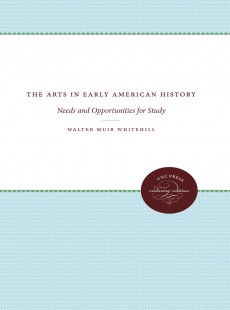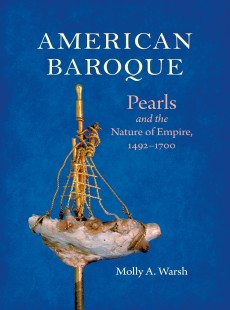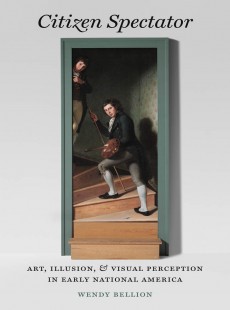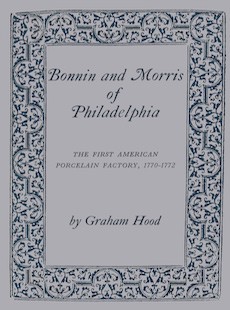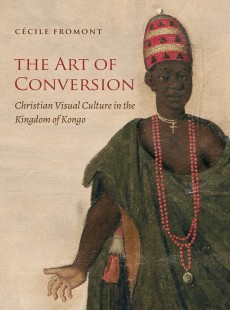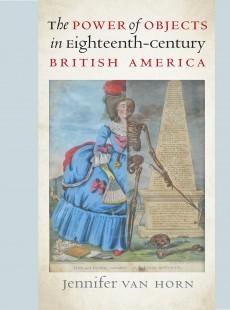
The Power of Objects in Eighteenth-Century British America
Jennifer Van Horn
 Publisher: Omohundro Institute
Publisher: Omohundro Institute
Imprint: OIEAHC
Published: 02/2017
Reprint: 2019
Pages: 456
Subject: History, Design, Fine Arts,Folklife & Folklore
Cloth ISBN: 9781469629568
eBook ISBN: 9781469629582
DESCRIPTION
Over the course of the eighteenth century, Anglo-Americans purchased an unprecedented number and array of goods. The Power of Objects in Eighteenth-Century British America investigates these diverse artifacts—from portraits and city views to gravestones, dressing furniture, and prosthetic devices—to explore how elite American consumers assembled objects to form a new civil society on the margins of the British Empire. In this interdisciplinary transatlantic study, artifacts emerge as key players in the formation of Anglo-American communities and eventually of American citizenship. Deftly interweaving analysis of images with furniture, architecture, clothing, and literary works, Van Horn reconstructs the networks of goods that bound together consumers in Boston, New York, Philadelphia, and Charleston.
Moving beyond emulation and the desire for social status as the primary motivators for consumption, Van Horn shows that Anglo-Americans' material choices were intimately bound up with their efforts to distance themselves from Native Americans and African Americans. She also traces women's contested place in forging provincial culture. As encountered through a woman's application of makeup at her dressing table or an amputee's donning of a wooden leg after the Revolutionary War, material artifacts were far from passive markers of rank or political identification. They made Anglo-American society.
LEARN MORE ABOUT THIS BOOK
ABOUT THE AUTHOR
Jennifer Van Horn is assistant professor of art history and history at the University of Delaware.
AWARDS
Honorable Mention, Louis Gottschalk Prize, American Society for Eighteenth-Century Studies (2018)
REVIEWS
"The best book I’ve read in years in any field of early American studies; I cannot imagine a more thorough, innovative, and riveting account of the challenge of crafting civility in this period. Van Horn dexterously combines art history and material culture studies, showing a keen sensitivity to the way American civility was tenuously defined both by aesthetic models in the high-style metropole and by more proximate examples of Native and African American material culture. The writing is elegant and lucid and crackles with saucy humor."
--Jennifer L. Roberts, Harvard University
"In the surprising and welcome florescence of new books on eighteenth-century American art and material culture, Van Horn’s stands out as one of the most meticulously researched and engagingly written. Reading text against object and object against text, she draws us into a richly variegated world of human actors, motivations, and divergent worldviews and convincingly extrapolates behavior and belief from an unlikely series of assemblages."
--Margaretta M. Lovell, University of California, Berkeley
"Jennifer Van Horn opens our eyes and minds with her masterful exploration of the centrality of objects to the identity politics of eighteenth-century British America. Bringing portraiture, dressing tables, gravestones, and even a wooden leg into a dynamic and provocative conversation, she vividly instructs us that history is inscribed in material things in ways that transcend the limits of the written word."
--Bernard L. Herman, University of North Carolina at Chapel Hill
“Imaginatively developed, extensively documented, and well written. Recommended.”
--Choice
“Forms a powerful testament to the value of true interdisciplinarity in its ability to advance histories of portraiture, decorative arts, and print culture as well as civil society, political identity, and gender and sexuality.”
--The William and Mary Quarterly
“Represents some of the best of material culture scholarship, blending new information and ideas that are stretched to thought-provoking but not always documentable observations.”
--Panorama: Journal of the AHAA
“This is an exceptional example of the recent turn in material culture studies toward object assemblages.”
--The Journal of Southern History
“Van Horn’s work reveals how objects and people were integral to the networks that defined new individual and group identities within an emerging social order.”
--The Journal of Southern History
“Provides a convincing argument for the centrality of material culture studies to the ever-evolving American historical imagination. . . . Van Horn offers deft integration of material, visual, textual, emotional, and embodied evidence.”
--Winterthur Portfolio
RELATED TITLES



